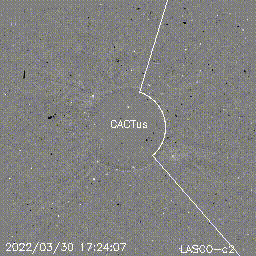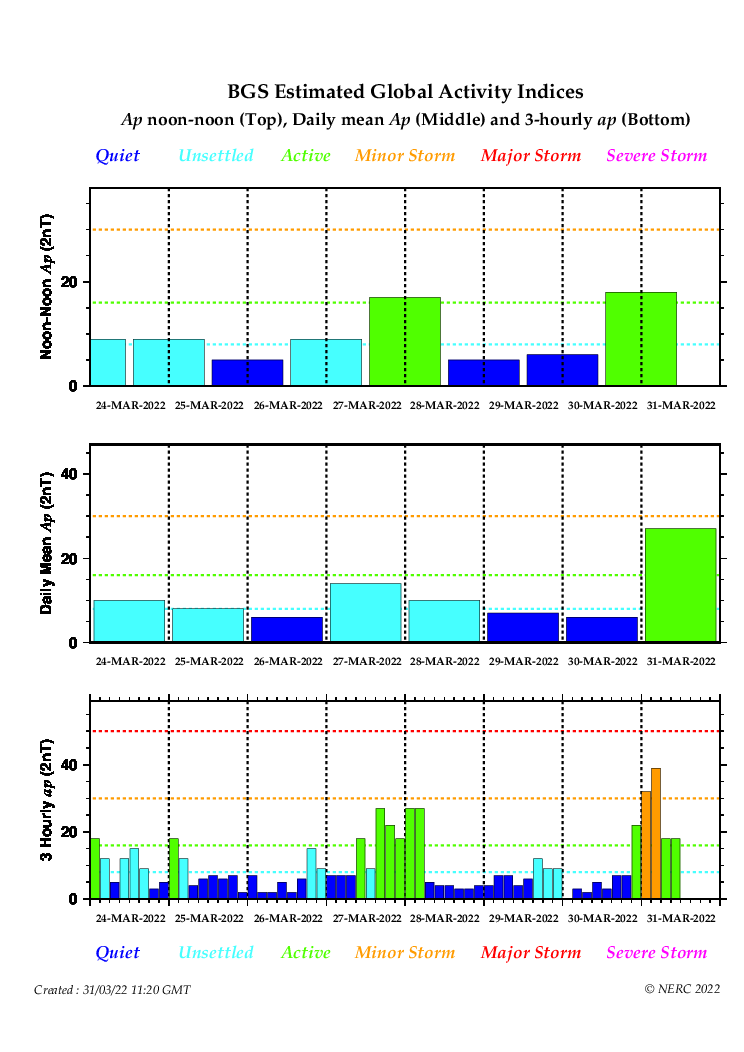Space Weather Alert Update - 31st March 2022
What Has Happened?
Two Earth directed coronal mass ejections (CMEs) that were associated with M-class flares, both originating from the Earth-facing active region AR12975, arrived in the early hours of 31st March. The initial shock in the solar wind occurred at around 01:40UT and resulted in significant disturbances in the Earth's magnetic environment.
Following the initial shock, the interplanetary magnetic field (IMF) strength remained weak, but then began to increase, peaking at 20nT. The magnetic field has not yet remained southward directed for a prolonged period, and as such the geomagnetic activity has not reached the levels we might expected from a double CME.
The effects of these CMEs are still ongoing, with more periods of STORM G1 possible today, whilst the solar wind remains disturbed. There could still be a chance of brief STORM G3 periods, if the IMF turns southwards in the coming hours.
In addition, another CME associated with an X-class flare was observed on 30th March from the same active region and is expected to arrive during the early hours of 2nd April. This will likely cause further disturbances to the Earth's environment, with a chance for some STORM G3 periods.
Assuming clear, dark skies, there remains a chance of seeing the aurora overnight on 31st March, and again on 2nd April. Those in Scotland, northern England and Northern Ireland have a better chance, if the weather is favourable.
See NOAA space weather scales for more details about these storm levels
Sign-up to receive Geomagnetic Disturbance Alert emails.
Follow us on Twitter:
Follow @BGSauroraAlert for more occasional aurora alerts.
Follow @BGSspaceWeather for daily space weather forecasts.
Glossary
- BGS
- The British Geological Survey is one of the Natural Environment Research Council's Research Centres.
- CME or Coronal Mass Ejection
- The eruption of a portion of the outer atmosphere of the Sun into space, caused by rapid changes in its magnetic field. Often occurs along with a solar flare.
- Solar Flare
- Energy released by the explosive reorganisation of magnetic fields within the Sun's atmosphere.
- Solar Wind
- The ever-present expansion of the Sun’s hot outer atmosphere into the solar system, which carries space weather within it.



